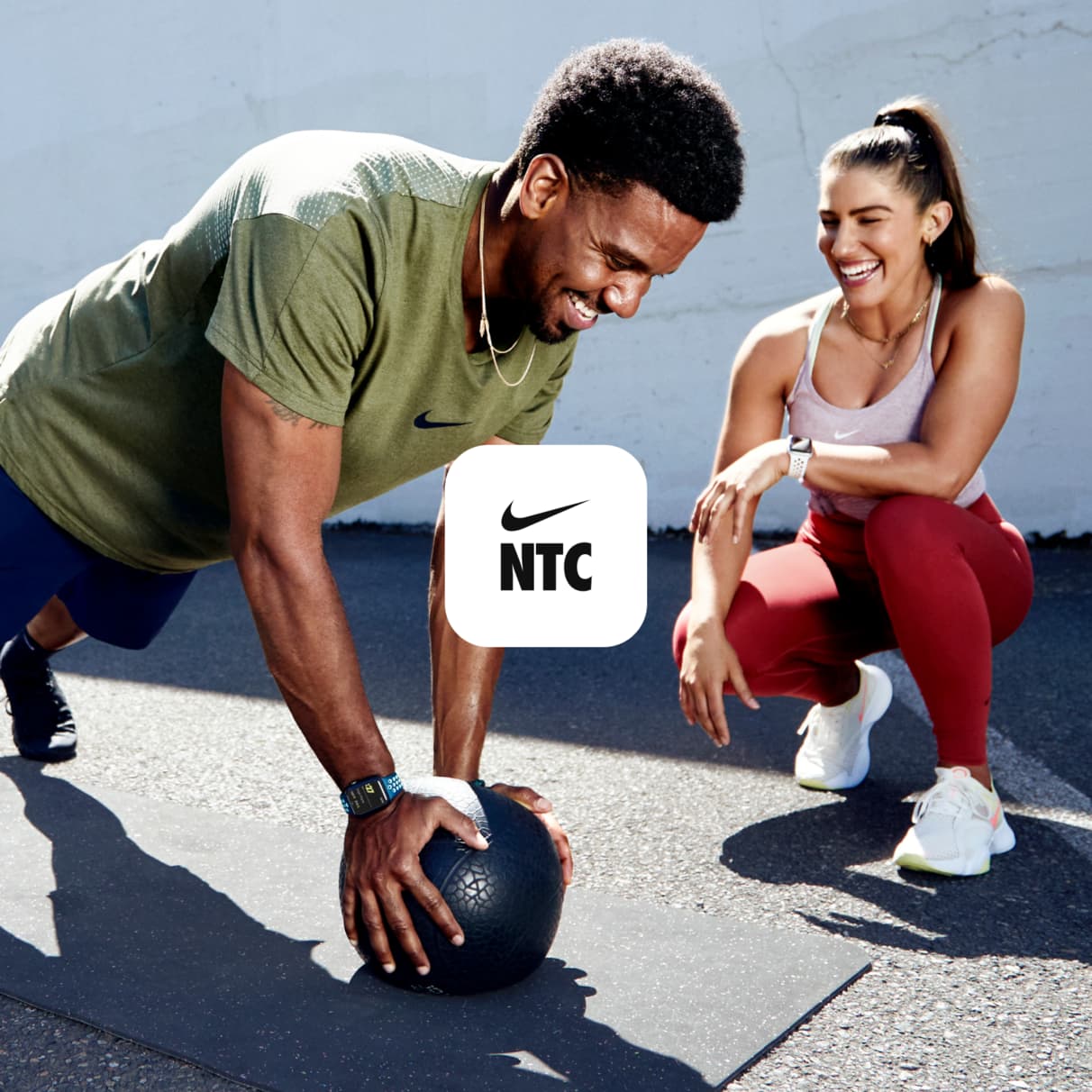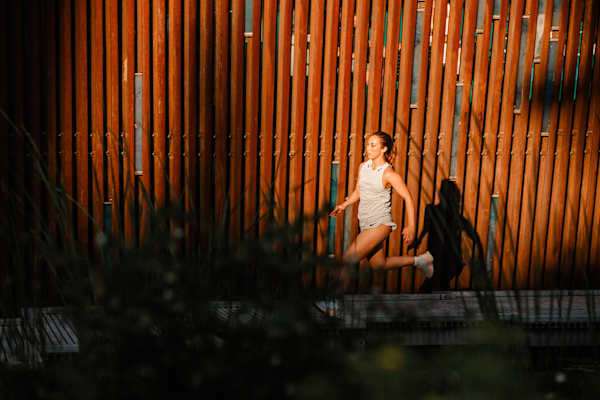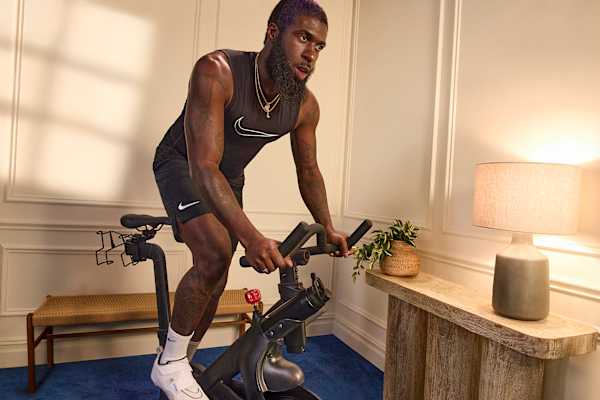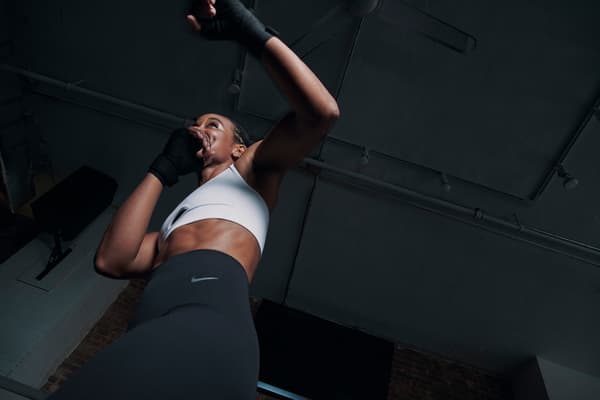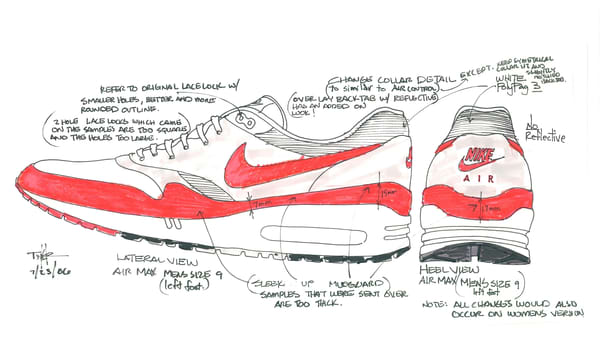4 Benefits of Cycling, According to Experts
Sport & Activity
A cycling coach and a physiotherapist share how cycling can transform your life for the better.

Having a movement routine is good for your overall well-being, whether it's to improve your cardiovascular health or up your cognitive function. If you're looking for a form of exercise that's gentle on your joints, intense (when you want it to be), and can be done for years to come, consider adding cycling to your fitness programme.
Below, a cycling coach and a physiotherapist offer a few potential health benefits of cycling a few times a week.
The Benefits of Cycling, According to Experts
1.It's a Non-weight-bearing Sport

"Cycling is great because it's easy on your body", said Mari Holden, Olympic cyclist, USA Cycling Level 1 coach. Plus, you can push yourself physically and mentally without hurting yourself, she added. But to prevent burnout, it's important that you don't overtrain, that you eat nutritious foods to provide you with energy before, during and after sessions and that you make sure you're adequately recovering.
"It's very easy to be able to do it [cycling] and not harm your body", Noah Abrahams, DPT, said.
"If you have ankle, knee, hip or spine issues, cycling is a good form of physical activity because it's non-weight-bearing and puts the ankles, knees, hips and lumbar spine in an open-packed position or a position where there is the least amount of bone-on-bone contact within a joint", Abrahams said.
"Utilising as much of your joint space as possible in a pain-free pattern leads to longevity of joint health", he said. Starting a cycling routine doesn't have many contraindications, according to Abrahams, but if you have any concerns, it's advised to speak to a professional such as a physiotherapist.
Because cycling is non-weight-bearing, Abrahams recommended working with someone, such as a certified personal trainer, to implement some weight-bearing activity into your routine. This may especially be the case if you have, or are at risk of, certain conditions like osteopenia (the loss of bone mineral density) or osteoporosis (a disease that causes bones to weaken and become brittle). Osteoporosis won't get worse with cycling but it also won't improve with cycling, explained Abrahams, which is another reason to supplement cycling with resistance training.
Aerobic training, like cycling, is beneficial for your cardiovascular system, but it doesn't provide adequate stimulus to the bones. Weight-bearing activity, like resistance training utilising free weights, machines and even resistance bands, will help improve your bone density, build musculature and prevent serious injury overall.
2.Cycling Is an Optimal Cross-training Modality

Because of the low-impact nature of cycling, the sport can be an optimal method of cross-training. When implemented successfully, cross-training introduces different training modalities and movement patterns to your movement routine to supplement your main activity or workouts.
Cross-training is a great way to mix up your usual routine and can help improve your main sport or activity, such as running. It can also help to prevent overuse injuries. What's more, when it comes to cycling, Abrahams said there are numerous ways to incorporate it into your routine. For example, Abrahams said you can perform three cycling sessions a week for 45 minutes and longer for endurance training.
Another option is to perform three 30 seconds max effort "sprints" followed by 30 seconds of rest, repeating for a total of 10 rounds. If you want to do a combination of base mileage for endurance and more speed and strength work, you can perform this work for five to 10 minutes with your base miles in between.
Abrahams also recommended spending a minimum of 90 minutes focusing on technique work and bike handling skills in addition to doing one of the previously mentioned workouts. As always, listen to your body and make modifications when necessary.
3.It Can Improve Aerobic Fitness

Exercise can be broken into two categories: anaerobic exercise and aerobic exercise. Anaerobic exercise is considered intense physical activity done in a short duration and is fuelled by the muscles' stored energy sources as opposed to freshly inhaled oxygen. Sprinting and HIIT workouts are examples of anaerobic exercise.
Conversely, aerobic exercise relies primarily on your cardiorespiratory system, which sends oxygen to your muscles and can be sustained for longer durations than anaerobic activities. Workouts such as cycling, long-distance running, dancing and hiking generally all fall into this type of exercise. Improving your aerobic capacity can reduce the risk of chronic diseases and adverse health outcomes. Not only will you benefit from a greater aerobic capacity when cycling, but this improved aerobic capacity can translate to other endurance sports such as running.
(Related: What Are the Benefits of Dancing?)
4.It's a Sport That Has Longevity

Regardless of how your body evolves over the years, both Abrahams and Holden said cycling can be done as you age. It's also a sport that's easy to physically adapt to, whether you simply want to do it for leisure or you have hopes of making it your main form of activity, according to Abrahams.
If you're going to add cycling to your routine, Holden suggested going to your local bike shop to have your bike fitted and set up. It's also recommended that you work with a certified coach who can help you with the essentials such as form and technique and tailor a training plan to match your goals.
How to Start a Cycling Routine
1.Set a Goal
Before starting a cycling routine, Holden said to set achievable, realistic goals. This will look different from person to person, so take some time to think about what it is you want to achieve. Research has found that process goals can enhance self-efficacy, intrinsic interest and satisfaction. For context, process goals are specific steps you can take towards achieving a bigger goal. A process goal may look like exercising for 30–45 minutes, five days a week.
2.Get Your Gear
Next, it's time to get the appropriate gear, like a bike. Your bike should suit your size, style and riding needs, Holden said. She advised going to a local bike shop where you can work with an expert to find the best bike for the style of cycling you'll be doing.
In addition to finding a bike, you'll also need to invest in gear like a helmet, cycling shoes, cycling shorts, gloves and a repair kit. If you're on a limited budget, consider the helmet, shorts and repair kit first.
(Related: The Best Nike Cycling Gear for Cold Weather)
3.Find a Coach or a Training Programme
"Working with a coach privately or joining a training group is a good way to begin training", Holden said. You'll also be able to learn more about how to train (and prevent things like overtraining syndrome) while connecting with others in the cycling community. Holden also recommended downloading cycling training apps to record your routes and progress.
Words by Tamara Pridgett
